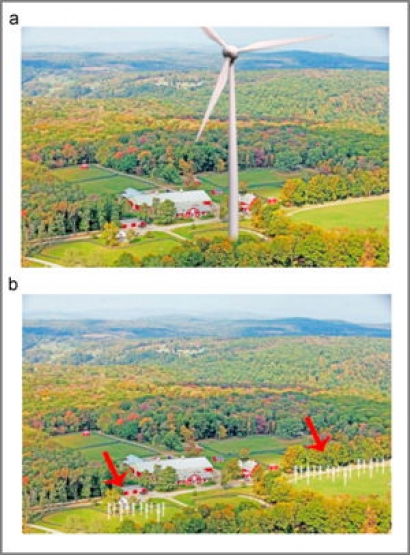
In a recent setback to wind energy proponents, the Vermont Public Utility Commission adopted new regulations that limited the amount of sound new wind projects are allowed to produce. And in counties across California, similar restrictions have been passed limiting wind energy expansion. While some states are growing their wind power sectors, California has seen a plateau in growth over the last four years.
To better understand these concerns over wind energy, researchers at Stanford University conducted a poll examining how receptive people in California are to vertical axis wind turbines. The research, published in the journal Energy Policy, was funded by the Bill Lane Center for the American West.
“For California, even with the state’s support for climate action and reducing emissions, wind farms can be a tough sell for residents,” said Iris Hui, a co-author on the paper and senior researcher with the Bill Lane Center for the American West at Stanford University. “We wanted to see if the potential for lower impacts from vertical axis turbines might persuade Californians to be more receptive to large-scale wind projects.”
Vertical axis turbines have been around for decades but have been less popular options for large wind farms because of concerns that current models are less reliable and produce less energy per unit. But the tide could turn with public concern over the impacts that wind energy has on people as well as birds and other wildlife.
“Because vertical axis turbines operate at lower speeds, lower height, and have a different visual signature than conventional wind turbines, we anticipated that they would have less impact on birds and wildlife,” said John Dabiri, professor of civil and environmental engineering and of mechanical engineering, and a co-author on the paper. “Our field testing over the past eight years has shown this to be anecdotally true. We also expected the fact they they’re less noisy and harder to see from a distance would make them more attractive for communities. But it was important to test these assumptions in practice.”
This results of the poll could help California and other states make better use of abundant wind energy, said political science Professor Bruce Cain.
The team devised an online opt-in survey that asked respondents about their feelings on the different turbine technologies. The most desirable feature for vertical axis turbines was the idea that they may kill fewer birds and bats. However, cost remained a big concern, as did where to put the turbines.
Dabiri’s lab at Stanford is working on ways to develop vertical axis turbines that can reach parity on energy output with horizontal axis turbines and has research showing the potential of deploying smaller vertical axis turbines in clusters to further perpetuate wind. Due to their smaller stature, there is also more potential to deploy these turbines in a more urban setting than is possible with larger horizontal axis turbines
Respondents with higher educational levels who value action on climate change were more likely to support vertical axis turbines being integrated into an urban setting.
The researchers stress these findings indicate that rather than being competing technologies, vertical and horizontal wind turbines can be complementary.
“Vertical axis turbines could be favored in areas of significance to wildlife or in certain urban settings where larger turbines are not viable,” said Hui.
“The real challenge that remains is to do more rigorous testing on how vertical axis turbines impact birds,” said Dabiri. “If our anecdotal evidence of lower avian impacts can be supported by formal biological studies, it could make a real difference in public acceptance.”
Cain is also a senior fellow at the Stanford Woods Institute for the Environment, and the Spence and Cleone Eccles Family Director of the Bill Lane Center for the American West. Dabiri is also an affiliate of the Stanford Woods Institute for the Environment.
Video by Ian Brownstein
Photo: Stanford researchers surveyed Californians on how they felt about traditional versus vertical axis wind turbines in a rural setting. (Image credit: Iris Hui)

